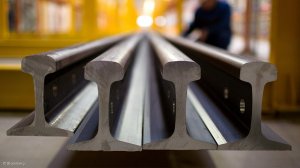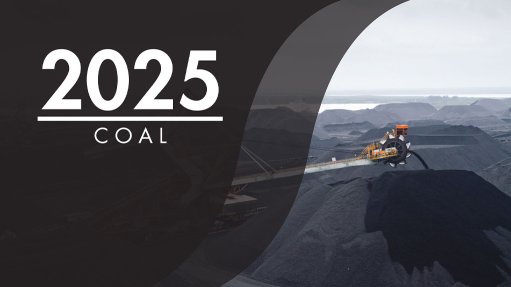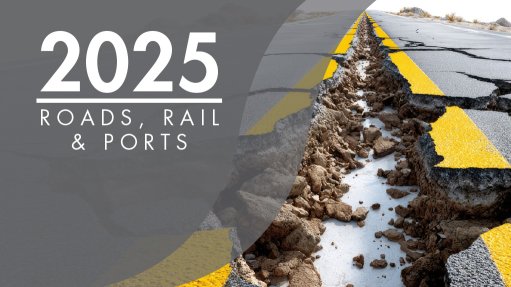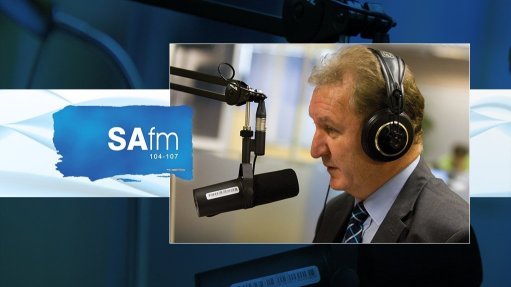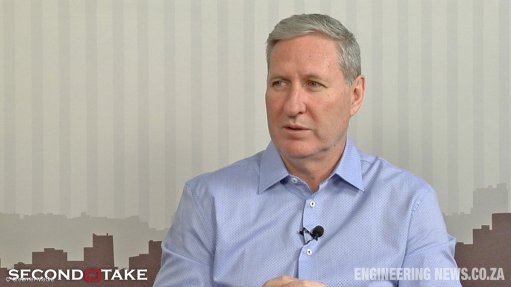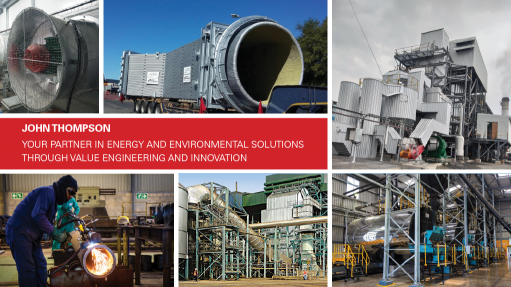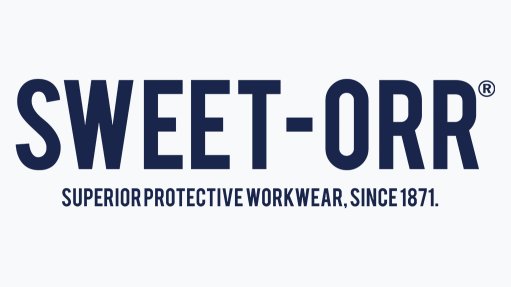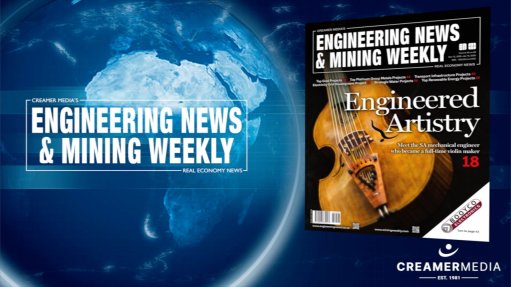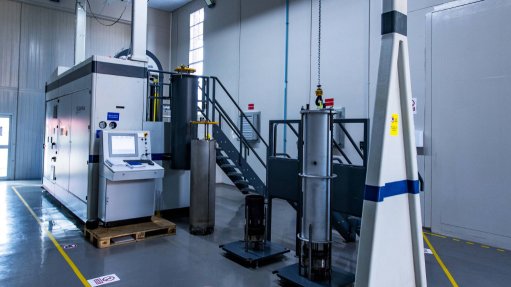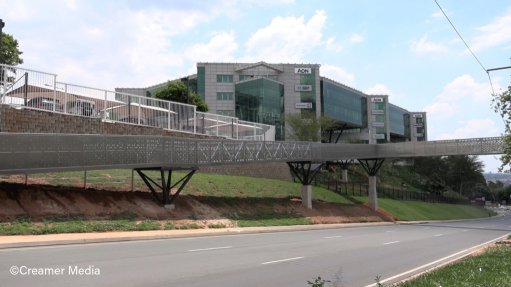Steel production likely to stagnate or decline this year, says Roskill

Roskill steel alloys principal consultant Erik Sardain discusses the impact of Covid-19 on the global steel industry. Video: Creamer Media's Kutlwano Matlala. Editing: Creamer Media's Nicholas Boyd.
Steel production in developed economies is likely to either stagnate, or decline completely, as the Covid-19 pandemic continues to influence and impact on the global economy, consultancy Roskill steel alloys principal consultant Erik Sardain said on May 5.
Speaking in a webinar, he explained that, owing to the humanitarian crisis, more environmental measures could further reduce steel mills’ competitiveness and lead to permanent closures, particularly as stricter environmental regulations and more scrap availability will translate into more electric arc furnaces (EAFs) being built in China.
In effect, this would increase China’s market share from 12% to just below 20% by 2030, and the decoupling between steel and pig iron will accelerate.
The forecast is based on China’s steel production having increased from 128-million tonnes in 2000 to 996-million tonnes in 2019. This increase, Sardain noted, was “driven by industrialisation and urbanisation”.
As the country’s economy matures, Roskill forecasts China’s steel production to peak at just over one-billion tonnes by mid-2020.
However, this peak is likely to be short-lived, according to Sardain, as steel production outside of China dropped by 1.5% year-on-year, led by developing economies.
Output fell by 5.1% year-on-year in the European Union (EU), 4.8% year-on-year in Japan, while the US’s production increased by only 1.5% year-on-year and is supported by a stronger economy and tariffs.
Production in these economies has been impacted on by a slowing economy, trade friction and geopolitical tension before the pandemic, Sardain said, noting that these factors would continue to impact on China, alongside the Covid-19 pandemic.
Taking the pandemic into account, Sardain referred to March figures from the World Steel Association (worldsteel), which had reported a 6% year-on-year fall in global crude steel production, with declines of 1.7% year-on-year in China and 12% outside of China.
Some of the largest declines were in the EU (-20%), and North and Latin America (-9.4%).
Under a “V-shaped” scenario, Roskill forecasts China’s 2020 crude steel production to drop by 0.5% year-on-year, as domestic stimulus measures will offset lower exports, both direct and indirect.
China should, in theory, be able to mitigate the Covid-19 risk through its vanadium and niobium exposure to high strength low alloy (HSLA) steel applications.
China accounts for less than half of the world’s vanadium consumption, and less than 35% of the world’s niobium consumption. As such, both of these alloys should benefit from an expected resilience of the Chinese HSLA steel industry.
Sardain noted, however, that vanadium “may be more insulated” as it is more exposed to long steel products, while niobium should benefit from an “oligopolistic market and fixed price structure”.
Although China has an opportunity to recoup this potential loss by finding new opportunities in Africa, while further growth opportunities for the steel industry are expected to be limited to a small group of countries – primarily developing – with strong demographics and a low steel consumption per capita. These include India, Vietnam, Indonesia, Iran and Turkey.
Meanwhile, Chinese consumers of South African ores – a major source for chromium and manganese – have taken a “wait and see” approach before placing new orders in the hopes of new ores to be released in May that could support plants in June.
South Africa, along with many other countries in the rest of Africa, Europe and North America, is still enduring a lockdown as of early May.
However, Sardain indicated that a weak market for ferroalloys was already in place before the Covid-19 outbreak and some volatility in prices was expected as many ferroalloy producers were operating at a loss.
“As such, the impacts of Covid-19 are likely to accelerate and exacerbate this volatility over the course of 2020 and, to a lesser extent, 2021.”
Steel production outside of China, meanwhile, is forecast to drop 13.5% year-on-year in 2020, where output in the EU and North American regions will be more impacted by falling demand from the automotive and energy sectors.
“Covid-19 could mean more permanent shutdowns in the EU while the US steel industry’s future may depend on the infrastructure programme discussed by President Donald Trump,” Sardain noted.
However, South and South East Asian countries look “more insulated”, he added, as these have stronger underlying domestic markets, while Japan and Korean exports will be affected,
India should also see a production increase, although Sardain said that this would be at a reduced rate.
Article Enquiry
Email Article
Save Article
Feedback
To advertise email advertising@creamermedia.co.za or click here
Comments
Press Office
Announcements
What's On
Subscribe to improve your user experience...
Option 1 (equivalent of R125 a month):
Receive a weekly copy of Creamer Media's Engineering News & Mining Weekly magazine
(print copy for those in South Africa and e-magazine for those outside of South Africa)
Receive daily email newsletters
Access to full search results
Access archive of magazine back copies
Access to Projects in Progress
Access to ONE Research Report of your choice in PDF format
Option 2 (equivalent of R375 a month):
All benefits from Option 1
PLUS
Access to Creamer Media's Research Channel Africa for ALL Research Reports, in PDF format, on various industrial and mining sectors
including Electricity; Water; Energy Transition; Hydrogen; Roads, Rail and Ports; Coal; Gold; Platinum; Battery Metals; etc.
Already a subscriber?
Forgotten your password?
Receive weekly copy of Creamer Media's Engineering News & Mining Weekly magazine (print copy for those in South Africa and e-magazine for those outside of South Africa)
➕
Recieve daily email newsletters
➕
Access to full search results
➕
Access archive of magazine back copies
➕
Access to Projects in Progress
➕
Access to ONE Research Report of your choice in PDF format
RESEARCH CHANNEL AFRICA
R4500 (equivalent of R375 a month)
SUBSCRIBEAll benefits from Option 1
➕
Access to Creamer Media's Research Channel Africa for ALL Research Reports on various industrial and mining sectors, in PDF format, including on:
Electricity
➕
Water
➕
Energy Transition
➕
Hydrogen
➕
Roads, Rail and Ports
➕
Coal
➕
Gold
➕
Platinum
➕
Battery Metals
➕
etc.
Receive all benefits from Option 1 or Option 2 delivered to numerous people at your company
➕
Multiple User names and Passwords for simultaneous log-ins
➕
Intranet integration access to all in your organisation


